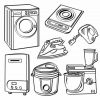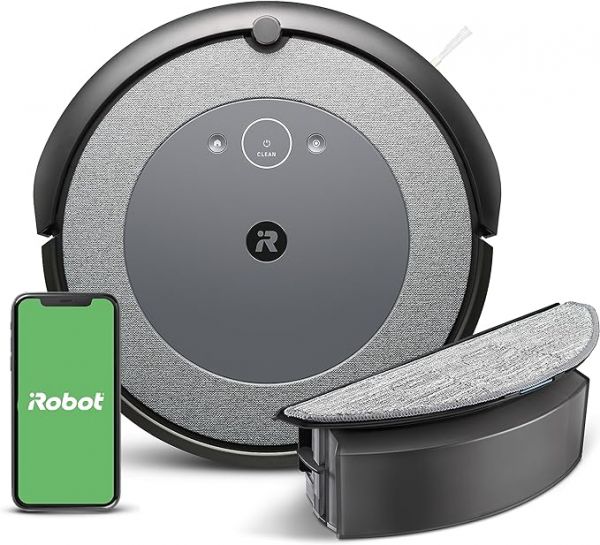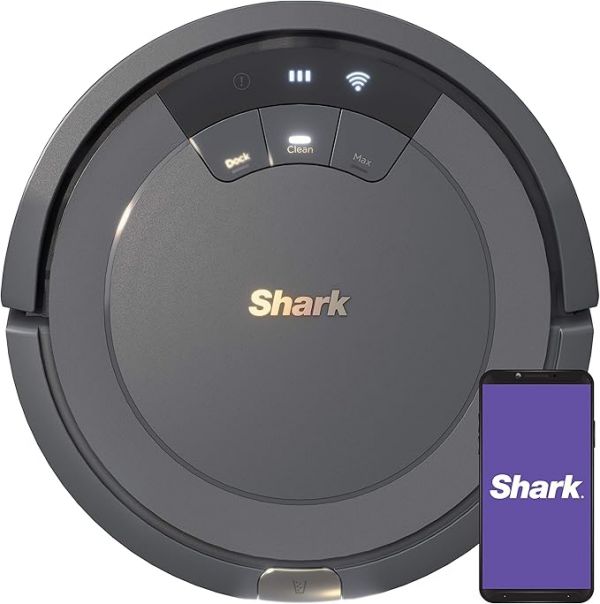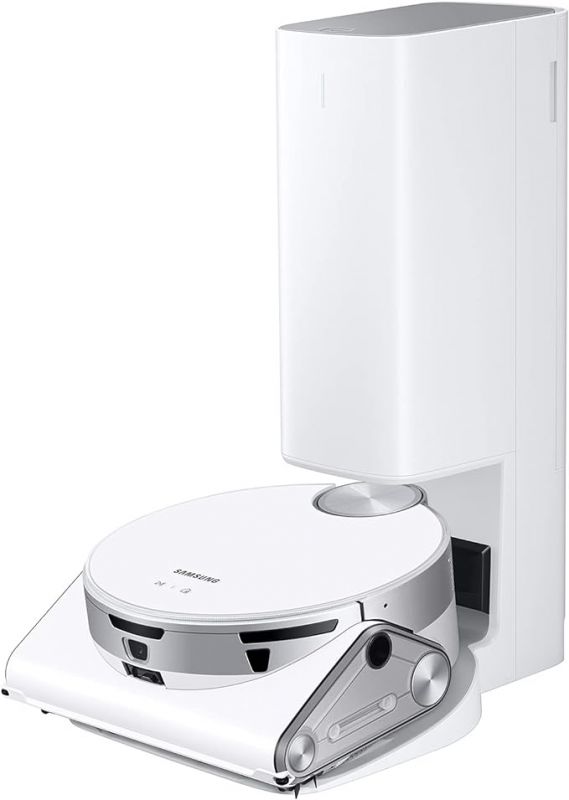How to choose a robot vacuum cleaner

Before making a purchase, consider the size of the device, suction power, battery life, the number of brushes, and the complexity of the sensors that the robot vacuum uses to navigate and create maps of your home. A good option is a model that can perform both dry and wet cleaning, and is equipped with lidar technology.
In books, films, and TV series, one of the main features of houses in the future is the use of robot vacuum cleaners. These devices are able to take on a significant part of the cleaning tasks in an apartment, if not all. They have been around for more than 20 years and have made significant progress in terms of functionality in recent years. Despite this, choosing the right robot vacuum cleaner for your home can be challenging.
This article will discuss which robot vacuum cleaner to choose and what features to consider. We will also explore why having a robot vacuum cleaner in your apartment is beneficial.To put it simply, a robot vacuum cleaner is a device that picks up dust and dirt and/or mops the floor with a damp cloth and does it more or less independently. However, there is no question of complete autonomy. Firstly, it requires regular maintenance (the less expensive the model, the less time-consuming this will be). Secondly, there are limitations: for example, most devices that have the function of mopping the floor will not deal with dried coffee or wine stains on linoleum, and inexpensive appliances can become tangled in cables. Finally, you will still need to do general cleaning occasionally, even if you purchase a very good and expensive model.
However, the benefits of a robot vacuum still outweigh these drawbacks. For instance:
- You can clean less frequently - it saves time. Dust and dirt will not accumulate in corners. Moreover, modern models hardly raise dust into the air during operation, making them useful for people with allergies.You don't need to worry about your pets. Not only will the robot effectively clean their fur, but animals in general react more calmly to this equipment than they do to traditional vacuum cleaners.
This type of vacuum can be used daily in areas where there is more debris, such as the kitchen. It is also suitable for people with limited mobility or elderly relatives. Most models can be controlled via a mobile app or remote control, similar to a TV, so there should be no difficulty in using them.
Using a robot vacuum cleaner can make your home more comfortable. Breathing will be easier and the risk of contracting a viral illness will decrease. Studies have shown that hospitals that use robots to clean wards during a pandemic reduce the spread of viruses and bacteria among patients and staff.
When choosing a robot vacuum for your home, there are several factors to consider. First, consider the type of cleaning it offers.There are several types of floor cleaning devices available, each with its own unique features and benefits. The most common type is the dry cleaning device, which is equipped with a dust collector to collect dry debris such as dust, crumbs, and hair. These devices are widely available and are often the most budget-friendly option.
On the other hand, there are wet cleaning devices, also known as polishers, which are less common and not as widely available in stores. These devices do not have a dust collection system, but they do have a small water tank that periodically moistens a cloth to clean the floor. They are best suited for home and apartment use.
The third type of device is the combined model, which allows the user to choose between wet and dry cleaning modes. These devices have both a dust collector and water tank, making them more versatile and capable of handling different types of dirt. However, they tend to be more expensive than the other two options.
Parameters that are important for cleaning
Since robot vacuum cleaners are designed to clean without human intervention, their ability to pass under furniture is of great importance. This, in turn, depends on their size.
The shape and dimensions of the device
The standard height of robot vacuum cleaners for a home or apartment is between 8 and 9 centimeters, and larger than 10 centimeters are rarely found. The most maneuverable models can be about 6 to 7 centimeters high, but it should be noted that they may not match the performance of full-sized models in terms of suction power. The width and depth of the robot typically range from 30 to 33 centimeters (with some variations).
Volume of the dust container
In specifications, the capacity of the dust collection container is indicated in milliliters. Smaller models typically have a capacity of 300 milliliters, while standard and larger models can have capacities up to 600 milliliters and beyond.In theory, the larger the dust container, the more dust it can collect before it needs to be emptied (this is done manually). However, in practice, most manufacturers recommend emptying the container after each use, regardless of its size. Even a small dust container is enough for one cleaning cycle. For models with a larger dust collector, the suction power may not decrease when the container is partially full, so they may perform better in certain situations. This is not a definitive factor, but it is a good point to consider when choosing a robot vacuum.
Like traditional vacuum cleaners, most robot vacuums have cyclonic dust collectors (or similar systems) that use centrifugal force to separate large particles from the air. As the air moves along a spiraling path inside the collector, it spins around a central axis, similar to a tornado. This action helps to remove large particles of dust, which settle on the sides of the container.Before returning to the room, air is further purified using a filter installed on the top of the dust collector. Manufacturers are now trying to use high-efficiency particulate air (HEPA) filters, which are the most effective. However, sometimes you may find EPA and conventional carbon filters, which should be avoided.
HEPA filters can be made of paper (for a couple of uses, conditionally disposable), or plastic or synthetic materials (reusable). We recommend opting for the second option, as a good reusable HEPA filter can be rinsed with tap water once or twice a month. Its lifespan is approximately 2 years, after which the filter will most likely need to be replaced.The main component of a robot vacuum cleaner is its rotating turbo brush, which has a pile or silicone covering. Models with good turbo brushes can handle various types of surfaces, from laminate floors to carpets. However, if the pile on the brush is longer than two centimeters, any device may get stuck. There are also models that do not have a turbo brush. These models are less effective at removing hair and are not recommended for use on carpets, as they work better on flat surfaces.
Home models often come with one or two side brushes, which are made of lint or silicone. These brushes have three or five beams and help sweep up debris on the sides of the vacuum cleaner and clean corners and baseboards.The number of side brushes on a robot vacuum cleaner is not crucial, as long as they are present. With good navigation, even one set of brushes can effectively clean an apartment. It's also important to consider the quality of the brushes themselves. Look for those made of plastic or silicone, as they tend to last longer and are less likely to get clogged with lint.
When choosing a robot vacuum, consider the technical specifications. These can be found in the product description or documentation. They can indirectly indicate how well the device performs at cleaning.
Another important factor to consider is suction power. A higher suction power will allow the robot to pick up more debris and hair, making it more effective at cleaning.The suction power of a robot vacuum cleaner is measured in pascals (Pa) or watts (W). The most powerful models can produce up to 4000 Pa, which is about 60 W. However, for most homes, a suction power of 2000 Pa is sufficient, as this is enough for preventive carpet cleaning and the load on the battery will not be too high, so the equipment will need to be charged less frequently. There are also models with lower suction power, but these are less efficient.
Autonomy
All robot vacuums are powered by batteries, mainly lithium-ion (Li-Ion). When the battery runs out of charge, the robot returns to the charging station automatically. Advanced models can detect when there are only a few minutes left until full discharge and return to the base themselves, while simpler models simply stop where they were and need to be placed on the base by the user.
The more powerful the battery is and the less energy the motor consumes during cleaning, the longer the robot can operate during one session.








